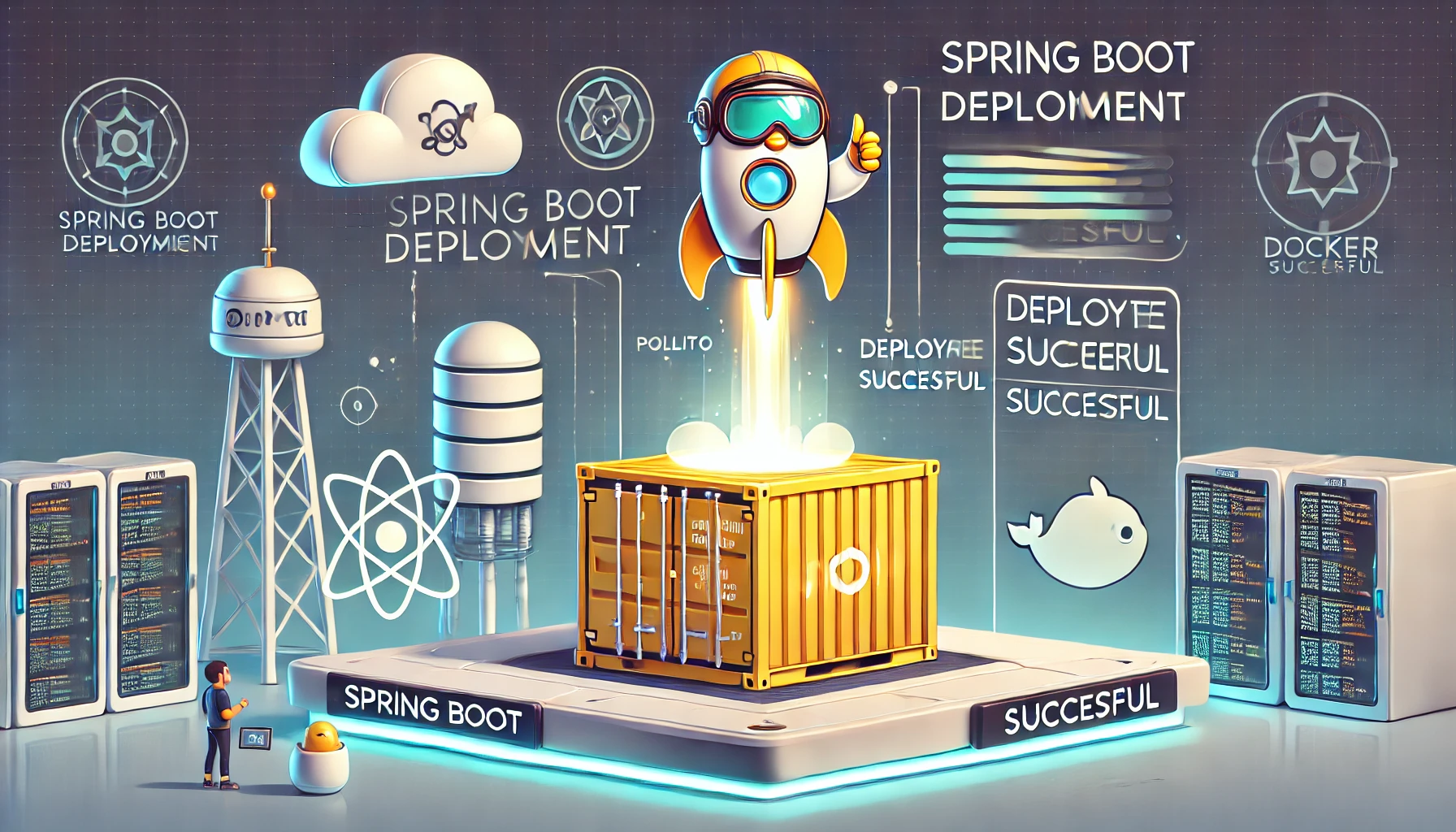Pollito's Opinion on Spring Boot Development 9: Deployment
Posted on November 23, 2024 • 4 minutes • 692 words • Other languages: Español
Some context
This is the ninth part of the Spring Boot Development blog series.
- The objective of the series is to be a demonstration of how to consume and create an API following Design by Contract principles .
- To achieve that, we created a Java Spring Boot Microservice that handles information about users.
- You can find the code of the final result at this GitHub repo
In this blog we are going to focus on deploying the microservice. Let’s start!
Why “dockerize” a Spring Boot application
1. Portability across environments
- Docker containers bundle the application along with all its dependencies (e.g., JDK, libraries).
- It ensures consistency across different environments (development, staging, production), avoiding the classic “it works on my machine” problem.
2. Ease of deployment
- A Docker image is a self-contained artifact that can be deployed anywhere Docker is supported (on-premises, AWS, GCP, Azure, etc.).
3. Scalability
- Containers are lightweight compared to traditional virtual machines, allowing you to spin up multiple instances of your Spring Boot app quickly.
- Useful for microservices architecture where scaling individual services is common.
4. Isolation
- Each Docker container runs in its own isolated environment.
- This avoids conflicts between your Spring Boot app’s dependencies and other apps or system-level libraries.
5. Simplified CI/CD pipelines
- Docker integrates seamlessly with CI/CD tools like Jenkins, GitLab CI, or GitHub Actions.
6. Improved resource utilization
- Containers share the host OS kernel, making them more resource-efficient than traditional VMs.
- This enables running more instances of your Spring Boot app on the same hardware.
7. Versioning and rollbacks
- Docker images are versioned, allowing you to track changes and roll back to a previous version if needed.
8. Cloud-Native alignment
- Most cloud platforms are optimized for containerized applications.
9. Simplifies team collaboration
- Developers and DevOps teams can use the same Docker image to ensure that everyone is working with identical application setups.
Dockerfile
Dockerfile
# Build Stage
FROM maven:3.9.9-eclipse-temurin-21-alpine AS build
WORKDIR /app
COPY pom.xml .
COPY src ./src
RUN mvn clean package -DskipTests
# Run Stage
FROM eclipse-temurin:21-jre-alpine
WORKDIR /app
COPY --from=build /app/target/*.jar app.jar
CMD ["java", "-jar", "app.jar"]
- Inspired on Ramanamuttana’s blog “Build a Docker Image using Maven and Spring boot”
- This Dockerfile uses a multi-stage build to efficiently build and run.
Stage 1: Build Stage
FROM maven:3.9.9-eclipse-temurin-21-alpine AS build
- Base Image: Uses a lightweight Maven image with Eclipse Temurin JDK 21 (Alpine-based for minimal size). This provides all tools necessary to build a Java application.
- Alias (AS build): Labels this stage as build for referencing in the later stages.
WORKDIR /app
- Working Directory: Sets the working directory to
/appinside the container. All subsequent commands run relative to this directory.
COPY pom.xml .
COPY src ./src
- Copy Dependencies:
pom.xmlis copied to the container to allow Maven to resolve dependencies.- The
srcfolder is copied for the source code of the project.
RUN mvn clean package -DskipTests
- Build Command: Executes Maven’s
clean packagelifecycle:- Cleans any previous build artifacts.
- Packages the application (usually into a
*.jarfile). - The
-DskipTestsflag skips running tests to speed up the build process.
Result: The compiled .jar file will be created in the target/ directory.
Stage 2: Run Stage
FROM eclipse-temurin:21-jre-alpine
- Base Image: Uses a lightweight JRE-only (Java Runtime Environment) image for running the application. This makes the runtime image smaller and more efficient.
WORKDIR /app
Working Directory: Again sets the working directory as /app.
COPY --from=build /app/target/*.jar app.jar
- Copy Artifact: Pulls the
.jarfile created in the build stage from the/app/target/directory and places it asapp.jarin the/appdirectory.
CMD ["java", "-jar", "app.jar"]
- Command: Defines the default command to run when the container starts:
- Executes the
javaruntime to run the packaged Spring Boot application.
- Executes the
Deployment
I decided to deploy the app in Render , because:
- It is free: free instances do have cold starts, but I don’t care much for this demo.
- It is extremely straight forward.
Nonetheless, there are many options out there, or you can always create your own VPS.
Here’s the tutorial I followed:
Next lecture
Work in progress…

